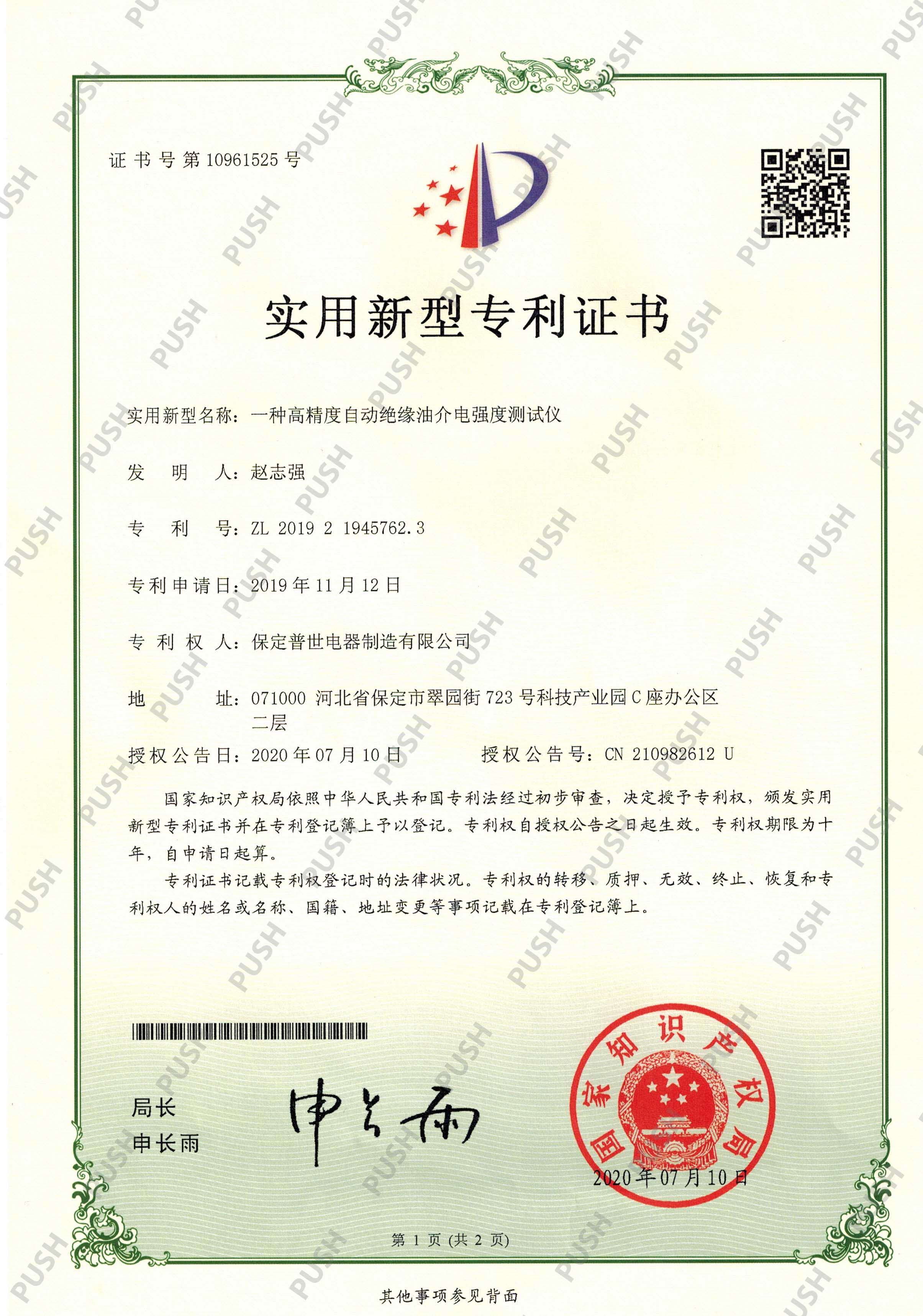 English
English


oil breakdown voltage tester
Understanding Oil Breakdown Voltage Testing Importance and Process
Oil breakdown voltage testing is a critical quality assurance step within various industries, especially those relying on electrical equipment. This testing assesses the insulating properties of oils, particularly transformer oils, which are used in electrical systems to maintain operational efficiency and safety.
What is Breakdown Voltage?
Breakdown voltage refers to the minimum voltage that causes a portion of an insulator to become electrically conductive. When this threshold is breached, the insulating oil can no longer effectively insulate the electrical components, leading to potential failures. This breakdown can occur due to contaminants, moisture, or degradation of the oil over time. Understanding the breakdown voltage of insulating oils helps ensure the longevity and reliability of electrical equipment, minimizing the risk of catastrophic failures.
Why is Oil Breakdown Voltage Testing Important?
1. Equipment Reliability Transformer oils are crucial in absorbing heat and preventing electrical arcing. Regular breakdown voltage testing ensures that the oil's insulating properties are intact, which directly contributes to the reliable operation of transformers and other electrical devices.
2. Safety Assurance High breakdown voltage indicates that the oil can effectively insulate components, reducing the risk of electrical discharges that can cause fires, explosions, or equipment failures. Regular monitoring of breakdown voltage is a proactive safety measure.
3. Preventive Maintenance Testing can identify potential issues before they escalate, allowing for timely maintenance or oil replacement. This preventive approach can save organizations significant costs associated with emergency repairs and downtime.
4. Quality Control For manufacturers and suppliers of insulating oil, breakdown voltage testing serves as a quality control measure. Ensuring that the oils meet industry standards helps maintain trust and reputation in the market.
oil breakdown voltage tester

The Testing Process
The process of measuring oil breakdown voltage typically involves a specialized piece of equipment known as a breakdown voltage tester. Here’s a general overview of how the testing is conducted
1. Sample Preparation The oil sample is collected and prepared for testing. It is crucial to ensure that the sample is free from contaminants and representative of the oil in the equipment.
2. Test Setup The breakdown voltage tester consists of two electrodes immersed in the oil sample. The distance between the electrodes is carefully set to standard specifications.
3. Voltage Application The tester gradually increases the voltage applied across the electrodes at a controlled rate. Operators monitor for any signs of discharge or flashover, which indicates the breakdown of the insulating properties of the oil.
4. Recording Results The highest voltage level reached before breakdown occurs is recorded as the breakdown voltage. This value is then compared against established industry standards to determine whether the oil is still viable for use.
5. Analysis and Reporting Test results are analyzed to determine the oil's condition. If the breakdown voltage is lower than acceptable thresholds, further action—such as oil treatment or replacement—may be required.
Conclusion
Oil breakdown voltage testing is an essential practice that ensures the integrity, safety, and reliability of electrical systems. By understanding the principles and processes behind this testing, industries can safeguard their operations against the detrimental effects of electrical failures. Regular testing not only prolongs the life of equipment but also promotes a safer working environment. For industries relying on transformer oils and other insulating fluids, investing in proper testing and maintenance protocols is a key component of operational excellence.
-
Differences between open cup flash point tester and closed cup flash point testerNewsOct.31,2024
-
The Reliable Load Tap ChangerNewsOct.23,2024
-
The Essential Guide to Hipot TestersNewsOct.23,2024
-
The Digital Insulation TesterNewsOct.23,2024
-
The Best Earth Loop Impedance Tester for SaleNewsOct.23,2024
-
Tan Delta Tester--The Essential Tool for Electrical Insulation TestingNewsOct.23,2024





